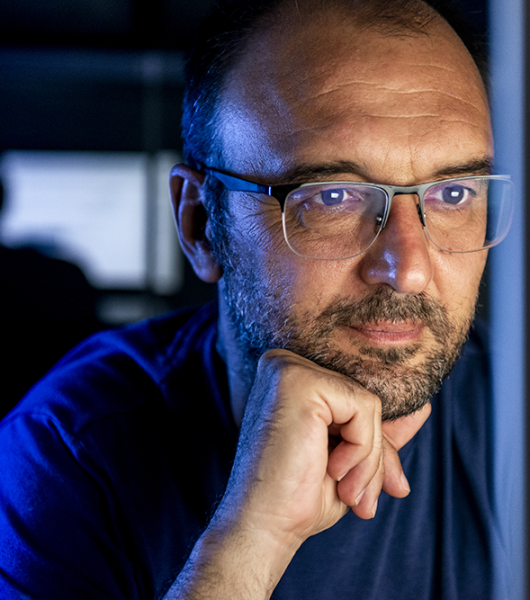Predictive models and pandemic scenarios
FBK epidemiologist Stefano Merler participated in a round table at the Genoa Science Festival on the theme of mathematical models applied to the study of pandemics
On Thursday 29 October, the Genoa Science festival, this year held entirely online, hosted the round table discussion entitled “Predictive models: what they are for and how they work”. Stefano Merler, head of the DCPS unit (Dynamical Processes in Complex Societies) at Fondazione Bruno Kessler, a research group at the forefront at national and international level in the epidemiological study of the Covid-19 pandemic, also spoke among the guests. He was joined by Alessandro Vespignani, physicist and epidemiologist at the Northeastern University of Boston, Daniela Paolotti, researcher at the ISI Foundation in Turin and Dino Pedreschi, professor of computer science at the University of Pisa.
The meeting, moderated by Francesco Suman, a science journalist with “Il Bo Live”, started from an analysis of what are the basic ingredients of a predictive model: the basic ones are two, the now famous reproduction number Rt, which indicates how many people can be infected by by each spreader over a certain period, and the so-caled “generation time“, i.e. the time interval that elapses between the infection of an individual and that of their potential contacts, ”Merler emphasized. “In addition to these, there is other clinical information, which can enrich and refine our model: for example the probability with which an individual of a certain age develops the disease and that for which he or she develops clinical symptoms, or requires hospitalization or intensive care”.
An essential aspect revolves around a model’s ability to make predictions. According to the experts who took part in the debate, it would be more appropriate to speak of “scenarios“. «A mathematical model does not tell you what will happen for sure because an epidemic is complex, and the behavior of individuals is constantly changing, partly as a result of political decisions. However, models can provide indications and offer possible scenarios, with the aim of helping decision-makers navigate the various possible choices», Merler explained.
The relationship between science and politics in the management of the pandemic was another “hot” topic at the meeting. Vespignani, who has collaborated with the US government, stressed that policy makers should shoulder their responsibilities, without blaming science for their own wrong choices. Merler then recounted his experience of collaboration with the Istituto Superiore di Sanità and with the local and national government. «I must say that, from all those with whom I have discussed at the various institutional levels, I have found attention to the various scientific aspects. I believe that, if it is difficult to be a scientist in this situation, it is also not easy to be a politician, who must pay attention to the health aspects but also to the economic and social ones».
Finally, questions from the public led the discussion to other particularly sensitive aspects of pandemic management, such as herd immunity and generalized lockdowns. “Herd immunity is an impracticable option, which in fact no country in the world has really taken into consideration, not even those that have opted for softer restrictions. With this transmissibility and a lethality of 1%, the number of deaths would become unacceptable on large numbers,” Merler said. “As for the Italian lockdown, we measured its impact and demonstrated that it worked, as it lowered the transmissibility index in all regions from 3 to 0.75 March 11 through 25. However, this does not mean that it is the preferred measure to consider in the near future as transmissibility is lower now compared to March: it might still be possible to improve the situation in a short time with intermediate measures in terms of restrictions but we will have to wait for the effects of the most recent regional decrees and ordinances to see id that is the case».

